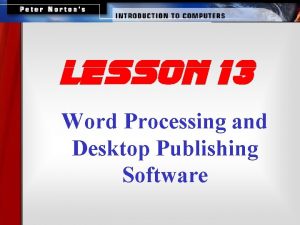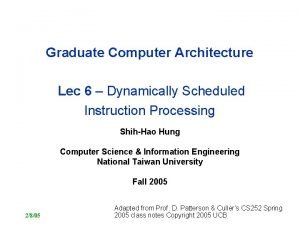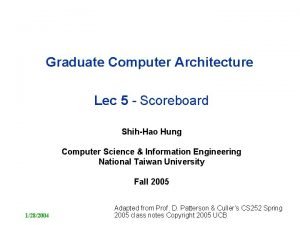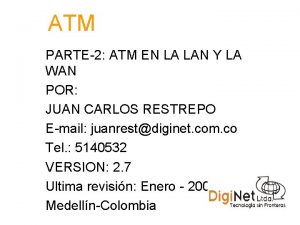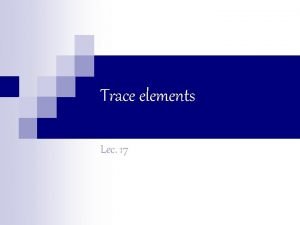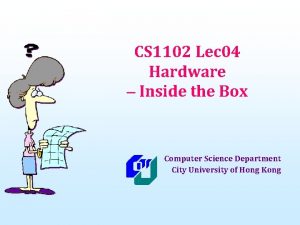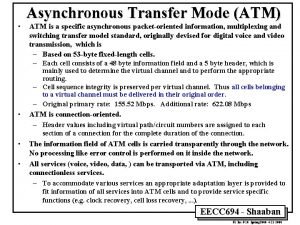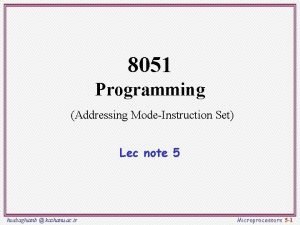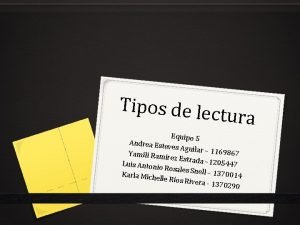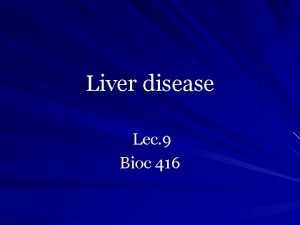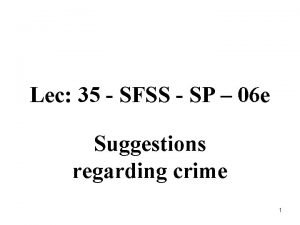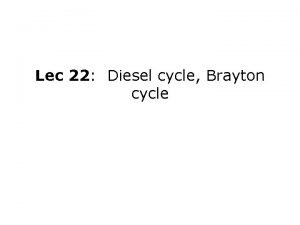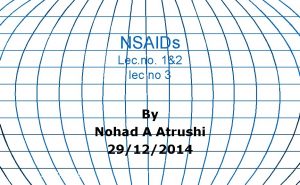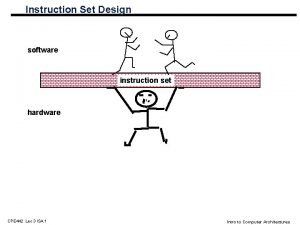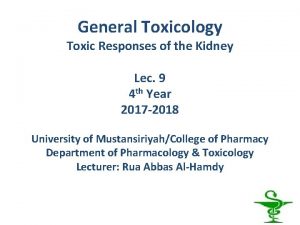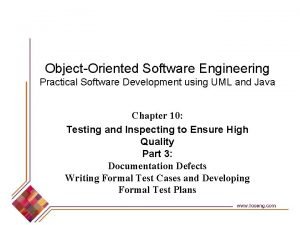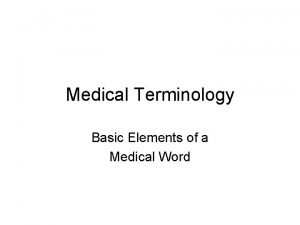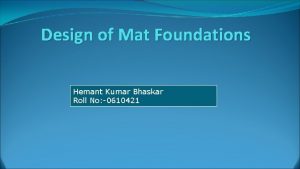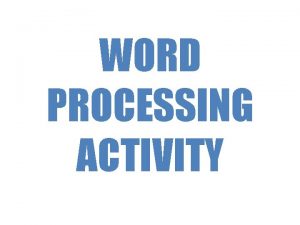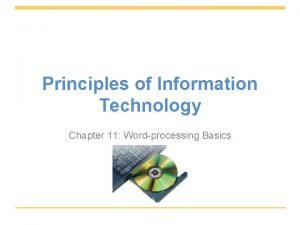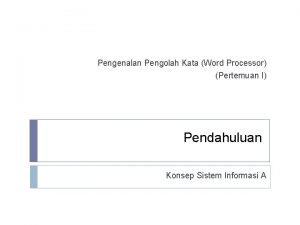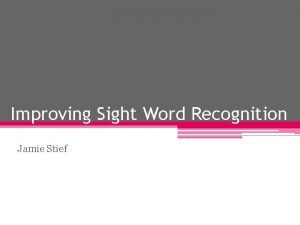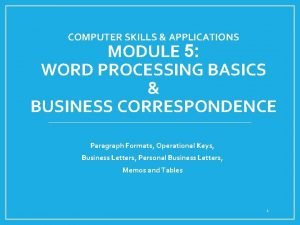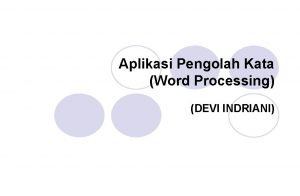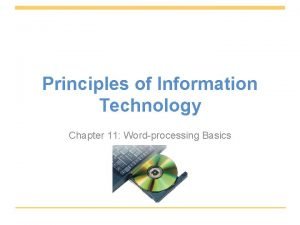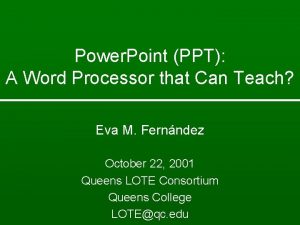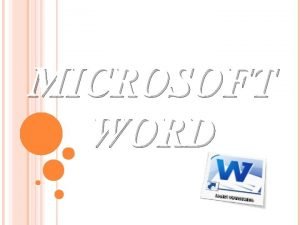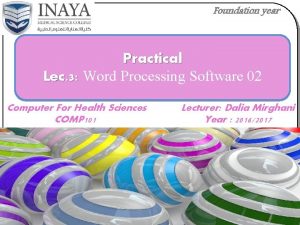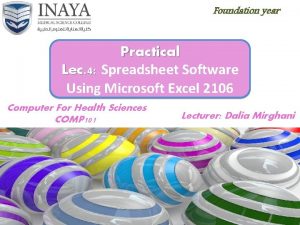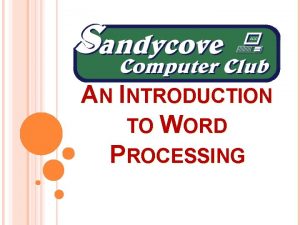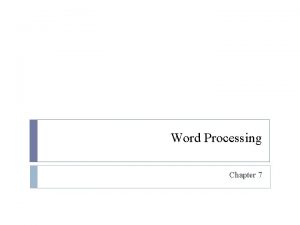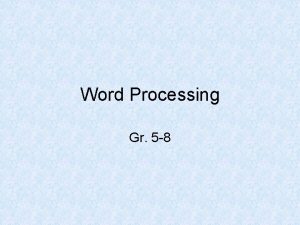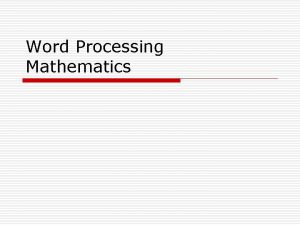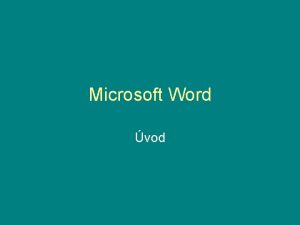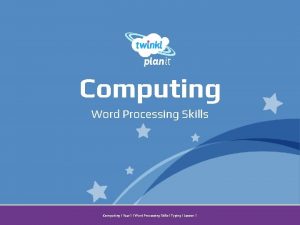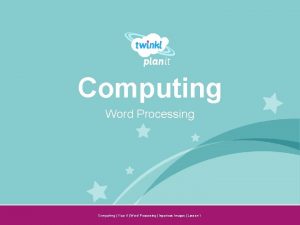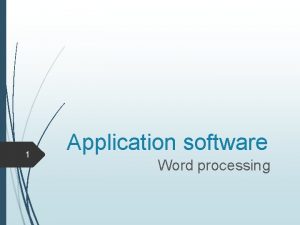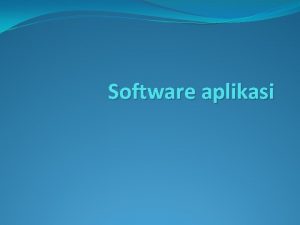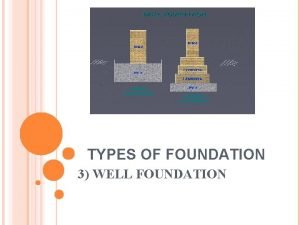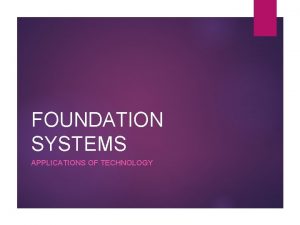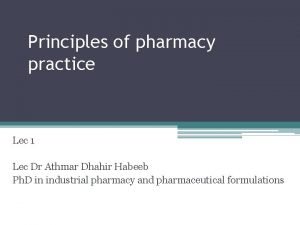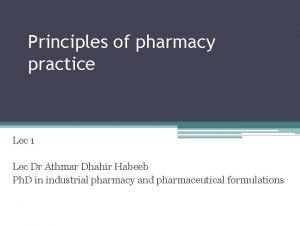Foundation year Practical Lec 2 Word Processing Software


![3. 1 Getting Started © Cheltenham Computer Training 1995 - 2000 ECDL/ICDL [Module Three] 3. 1 Getting Started © Cheltenham Computer Training 1995 - 2000 ECDL/ICDL [Module Three]](https://slidetodoc.com/presentation_image_h2/9695ec6cad8d977018d4ae59b1f60c82/image-3.jpg)















![3. 2 Basic Operations © Cheltenham Computer Training 1995 - 2000 ECDL/ICDL [Module Three] 3. 2 Basic Operations © Cheltenham Computer Training 1995 - 2000 ECDL/ICDL [Module Three]](https://slidetodoc.com/presentation_image_h2/9695ec6cad8d977018d4ae59b1f60c82/image-19.jpg)














![3. 3 Formatting © Cheltenham Computer Training 1995 - 2000 ECDL/ICDL [Module Three] - 3. 3 Formatting © Cheltenham Computer Training 1995 - 2000 ECDL/ICDL [Module Three] -](https://slidetodoc.com/presentation_image_h2/9695ec6cad8d977018d4ae59b1f60c82/image-34.jpg)











![3. 3. 3 Templates © Cheltenham Computer Training 1995 - 2000 ECDL/ICDL [Module Three] 3. 3. 3 Templates © Cheltenham Computer Training 1995 - 2000 ECDL/ICDL [Module Three]](https://slidetodoc.com/presentation_image_h2/9695ec6cad8d977018d4ae59b1f60c82/image-46.jpg)












![5 9 Thank you © Cheltenham Computer Training 1995 - 2000 ECDL/ICDL [Module Three] 5 9 Thank you © Cheltenham Computer Training 1995 - 2000 ECDL/ICDL [Module Three]](https://slidetodoc.com/presentation_image_h2/9695ec6cad8d977018d4ae59b1f60c82/image-59.jpg)
- Slides: 59

Foundation year Practical Lec. 2: Word Processing Software Computer For Health Sciences COMP 101 © Cheltenham Computer Training 1995 - 2000 Lecturer: Dalia Mirghani Year : 2016/2017 ECDL/ICDL [Module Three] - Word Processing

ECDL / ICDL - Module 3 Word Processing © 1995 -2000 Cheltenham Computer Training http: //www. cctglobal. com © Cheltenham Computer Training 1995 - 2000 ECDL/ICDL [Module Three] - Word Processing
![3 1 Getting Started Cheltenham Computer Training 1995 2000 ECDLICDL Module Three 3. 1 Getting Started © Cheltenham Computer Training 1995 - 2000 ECDL/ICDL [Module Three]](https://slidetodoc.com/presentation_image_h2/9695ec6cad8d977018d4ae59b1f60c82/image-3.jpg)
3. 1 Getting Started © Cheltenham Computer Training 1995 - 2000 ECDL/ICDL [Module Three] - Word Processing

3. 1. 1 First Steps with Word Processing © Cheltenham Computer Training 1995 - 2000 ECDL/ICDL [Module Three] - Word Processing

Exploring the Word Window Group © Cheltenham Computer Training 1995 - 2000 ECDL/ICDL [Module Three] - Word Processing

3. 1. 1. 1 Open a Word Processing Application. • Click on the Start icon to display the Start menu and then move the mouse pointer onto Programs • From the sub-menu select Microsoft Word © Cheltenham Computer Training 1995 - 2000 ECDL/ICDL [Module Three] - Word Processing

3. 1. 1. 2 Open an Existing Document - Make Some Modifications and Save. • Click on the Open icon and from the dialog box displayed select the required file – Make sure you can open a file from a USB! • Click on the Save icon to save a file. – Make sure you can save a file to USB! © Cheltenham Computer Training 1995 - 2000 ECDL/ICDL [Module Three] - Word Processing

3. 1. 1. 3 Open Several Documents. • To select a contiguous block – Use the Shift key • To select a non-contiguous block – Use the Control key © Cheltenham Computer Training 1995 - 2000 ECDL/ICDL [Module Three] - Word Processing

3. 1. 1. 4 Create a New Document and Save. • Click on the New icon and a new blank document will be displayed on the screen © Cheltenham Computer Training 1995 - 2000 ECDL/ICDL [Module Three] - Word Processing

3. 1. 1. 5 Save an Existing Document Onto the Hard Disk or Onto a Diskette. • Click on the Save icon and from the dialog box displayed select the required folder • Enter a file name and then click on the Save button © Cheltenham Computer Training 1995 - 2000 ECDL/ICDL [Module Three] - Word Processing

3. 1. 1. 6 Close the Document. • Click on the Close icon © Cheltenham Computer Training 1995 - 2000 ECDL/ICDL [Module Three] - Word Processing

3. 1. 1. 7 Use Application Help Functions. • The Office Assistant is displayed by default © Cheltenham Computer Training 1995 - 2000 ECDL/ICDL [Module Three] - Word Processing

3. 1. 2 Adjust Basic Settings © Cheltenham Computer Training 1995 - 2000 ECDL/ICDL [Module Three] - Word Processing

3. 1. 2. 1 Change Page Display Modes © Cheltenham Computer Training 1995 - 2000 ECDL/ICDL [Module Three] - Word Processing

3. 1. 2. 2 Use the Page View Magnification Tool/zoom Tool. • Use the Zoom group on the View tab. © Cheltenham Computer Training 1995 - 2000 ECDL/ICDL [Module Three] - Word Processing

3. 1. 2. 3 Modify the Quick access Toolbar Display. • To Modify the Quick access Toolbar Display, select the Quick access Toolbars command © Cheltenham Computer Training 1995 - 2000 ECDL/ICDL [Module Three] - Word Processing

3. 1. 3 Document Exchange © Cheltenham Computer Training 1995 - 2000 ECDL/ICDL [Module Three] - Word Processing

3. 1 Save an Existing Document Under Another File Format • Make sure that you know how to save in the following formats: – Document template – Web page. – PDF © Cheltenham Computer Training 1995 - 2000 ECDL/ICDL [Module Three] - Word Processing
![3 2 Basic Operations Cheltenham Computer Training 1995 2000 ECDLICDL Module Three 3. 2 Basic Operations © Cheltenham Computer Training 1995 - 2000 ECDL/ICDL [Module Three]](https://slidetodoc.com/presentation_image_h2/9695ec6cad8d977018d4ae59b1f60c82/image-19.jpg)
3. 2 Basic Operations © Cheltenham Computer Training 1995 - 2000 ECDL/ICDL [Module Three] - Word Processing

3. 2. 1 Insert Data © Cheltenham Computer Training 1995 - 2000 ECDL/ICDL [Module Three] - Word Processing

3. 2. 1. 1 Insert a Character, Word, Sentence, or Small Amount of Text. • Click on the location within the document that you wish to insert the character, word, sentence or small amount of text, as required. © Cheltenham Computer Training 1995 - 2000 ECDL/ICDL [Module Three] - Word Processing

3. 2. 1. 2 Use Undo Command. • From the Quick access menu choose the Undo command OR press Ctrl+Z OR click on the Undo button on the Quick access toolbar. © Cheltenham Computer Training 1995 - 2000 ECDL/ICDL [Module Three] - Word Processing

3. 2. 1. 4 Insert Special Characters/symbols. • Click on the Insert tab and select the Symbol command Or use Auto. Correct © Cheltenham Computer Training 1995 - 2000 (c) © (r) ® (tm) ™ ECDL/ICDL [Module Three] - Word Processing

3. 2. 1. 5 Insert a Page Break Into a Document. • Place the insertion point where you want to end one page and start another. • Press Ctrl+Enter. • Or • From insert tab_ pages _Page Break © Cheltenham Computer Training 1995 - 2000 ECDL/ICDL [Module Three] - Word Processing

3. 2. 2 Select Data © Cheltenham Computer Training 1995 - 2000 ECDL/ICDL [Module Three] - Word Processing

3. 2. 2. 1 Select Character, Word, Sentence, Paragraph or Entire Document. • To select a word – Double click on the word. • To select a line – Move the mouse pointer to the left of the line you wish to select, until the mouse pointer changes from an I bar to an arrow pointing upwards and to the right. You are now in the “Selection Bar”, a hidden screen element. – Click once with the mouse button to select the line. • To select a paragraph – Move the mouse pointer within the paragraph that you wish to select and click three times. © Cheltenham Computer Training 1995 - 2000 ECDL/ICDL [Module Three] - Word Processing

3. 2. 3 Copy, Move, Delete © Cheltenham Computer Training 1995 - 2000 ECDL/ICDL [Module Three] - Word Processing

3. 2. 3. 1 Use Copy and Paste Tools to Duplicate Text Within a Document • Use Copy and Paste tools to copy text within a document from home tab _ Clipboard Group • Or use drag and drop techniques – Drag and drop moves © Cheltenham Computer Training 1995 - 2000 ECDL/ICDL [Module Three] - Word Processing

3. 2 Copy and Move Text Between Active Documents. • To move data from a document select it and Cut it to the Clipboard (Ctrl+X), or to copy text from one document to another select the text and use the Copy command (Ctrl+C). • To insert this text into another document, simply select the document using the icons displayed in the Windows Taskbar • Position the insertion point at the location that you wish to insert the data and use the Paste command (Ctrl+V) to paste the data from the Clipboard into the document. © Cheltenham Computer Training 1995 - 2000 ECDL/ICDL [Module Three] - Word Processing

3. 2. 3. 3 Delete Text. • Select the block of text you wish to delete by dragging the mouse pointer over the text with the left mouse button depressed. • Once the text is selected press the Delete key. © Cheltenham Computer Training 1995 - 2000 ECDL/ICDL [Module Three] - Word Processing

3. 2. 4 Search & Replace © Cheltenham Computer Training 1995 - 2000 ECDL/ICDL [Module Three] - Word Processing

3. 2. 4. 1 Use the Search Command for a Word or Phrase Within a Document. • Select the Find command from the Edit group, or press Ctrl+F to display the Find and Replace dialog box. © Cheltenham Computer Training 1995 - 2000 ECDL/ICDL [Module Three] - Word Processing

3. 2. 4. 2 Use the Replace Command for a Word or Phrase Within a Document. • Select the Find and Replace command from the Edit group, or press Ctrl+H to display the Find and Replace dialog box. © Cheltenham Computer Training 1995 - 2000 ECDL/ICDL [Module Three] - Word Processing
![3 3 Formatting Cheltenham Computer Training 1995 2000 ECDLICDL Module Three 3. 3 Formatting © Cheltenham Computer Training 1995 - 2000 ECDL/ICDL [Module Three] -](https://slidetodoc.com/presentation_image_h2/9695ec6cad8d977018d4ae59b1f60c82/image-34.jpg)
3. 3 Formatting © Cheltenham Computer Training 1995 - 2000 ECDL/ICDL [Module Three] - Word Processing

3. 3. 1 Text Formatting © Cheltenham Computer Training 1995 - 2000 ECDL/ICDL [Module Three] - Word Processing

3. 3. 1. 2 Use Italics, Bold, Underlining. • Use the Font group icons! © Cheltenham Computer Training 1995 - 2000 ECDL/ICDL [Module Three] - Word Processing

3. 3. 1. 1 Change Fonts: Sizes and Types. • Use the Font group icons! © Cheltenham Computer Training 1995 - 2000 ECDL/ICDL [Module Three] - Word Processing

3. 3. 1. 3 Apply Different Colours to Text. • Click on the down arrow next to the Font Color icon, which will display a drop down dialog box. © Cheltenham Computer Training 1995 - 2000 ECDL/ICDL [Module Three] - Word Processing

3. 3. 1. 4 Use Alignment and Justification Options. • Use the alignment icons located on the Home tab_ Paragraph Group. © Cheltenham Computer Training 1995 - 2000 ECDL/ICDL [Module Three] - Word Processing

3. 3. 1. 6 Indent Text • Use the Increase Indent or Decrease Indent icons © Cheltenham Computer Training 1995 - 2000 ECDL/ICDL [Module Three] - Word Processing

3. 3. 1. 7 Change Line Spacing. • From the home tab _ Paragraph Group , click on the Line Spacing command to display the a drop down dialog box © Cheltenham Computer Training 1995 - 2000 ECDL/ICDL [Module Three] - Word Processing

3. 3. 1. 8 Copy the Formatting From a Selected Piece of Text • First select text to which you have applied formatting. • Click on the Format Painter icon on the Clipboard Group. • Drag across the text to which you want to apply the formatting information to. © Cheltenham Computer Training 1995 - 2000 ECDL/ICDL [Module Three] - Word Processing

3. 3. 2 General Formatting © Cheltenham Computer Training 1995 - 2000 ECDL/ICDL [Module Three] - Word Processing

3. 3. 2. 2 Add Borders to a Document. • Place the insertion point within the paragraph that you wish to add a border to. • Click on the Outside Border icon. © Cheltenham Computer Training 1995 - 2000 ECDL/ICDL [Module Three] - Word Processing

3. 3. 2. 3 Use Lists (Bulleted and Numbered). • Select the list you wish to apply number or bullet formatting to. • Click on the Bullets tool within the Paragraph Group © Cheltenham Computer Training 1995 - 2000 ECDL/ICDL [Module Three] - Word Processing
![3 3 3 Templates Cheltenham Computer Training 1995 2000 ECDLICDL Module Three 3. 3. 3 Templates © Cheltenham Computer Training 1995 - 2000 ECDL/ICDL [Module Three]](https://slidetodoc.com/presentation_image_h2/9695ec6cad8d977018d4ae59b1f60c82/image-46.jpg)
3. 3. 3 Templates © Cheltenham Computer Training 1995 - 2000 ECDL/ICDL [Module Three] - Word Processing

3. 3. 3. 1 Choose an Appropriate Document Template for Use in a Specified Task. • From the File drop down menu select New to display the New dialog box © Cheltenham Computer Training 1995 - 2000 ECDL/ICDL [Module Three] - Word Processing

3. 4 Finishing a Document © Cheltenham Computer Training 1995 - 2000 ECDL/ICDL [Module Three] - Word Processing

3. 4. 1. 1 Apply Existing Styles to a Document. • Select the text that you wish to apply a style to. • The Style Group, will display Word styles that can be applied to part of a document. © Cheltenham Computer Training 1995 - 2000 ECDL/ICDL [Module Three] - Word Processing

3. 4. 1 Styles and Pagination © Cheltenham Computer Training 1995 - 2000 ECDL/ICDL [Module Three] - Word Processing

3. 4. 2 Headers & Footers © Cheltenham Computer Training 1995 - 2000 ECDL/ICDL [Module Three] - Word Processing

3. 4. 1. 2 Insert Page Numbering in a Document • Choose the Page Numbers command from the Insert Tab to display the Page Numbers dialog box. © Cheltenham Computer Training 1995 - 2000 ECDL/ICDL [Module Three] - Word Processing

3. 4. 2. 1 Add Headers and Footers to a Document. • From the Insert tab, select the Header and Footer command Switches between header and footer © Cheltenham Computer Training 1995 - 2000 ECDL/ICDL [Module Three] - Word Processing

3. 4. 2. 2 Insert Date, Author, Page Numbers Etc. In Headers and Footers. • Select the Design tab _ Insert Group © Cheltenham Computer Training 1995 - 2000 ECDL/ICDL [Module Three] - Word Processing

3. 4. 2. 3 Apply Basic Text Format Options in Headers and Footers. • Use exactly the same techniques that you would use within the body of your document to apply basic font formatting. © Cheltenham Computer Training 1995 - 2000 ECDL/ICDL [Module Three] - Word Processing

3. 4. 3 Spelling & Grammar © Cheltenham Computer Training 1995 - 2000 ECDL/ICDL [Module Three] - Word Processing

3. 4. 3. 1 Use a Spell-check Program and Make Changes Where Necessary. • Click on the Spelling & Grammar in the Review Tab (or press F 7). © Cheltenham Computer Training 1995 - 2000 ECDL/ICDL [Module Three] - Word Processing

3. 4. 4. 1 Modify Document Setup: Page Orientation, Page Size Etc. • Click on the Layout Tab and select the Page Setup Group © Cheltenham Computer Training 1995 - 2000 ECDL/ICDL [Module Three] - Word Processing
![5 9 Thank you Cheltenham Computer Training 1995 2000 ECDLICDL Module Three 5 9 Thank you © Cheltenham Computer Training 1995 - 2000 ECDL/ICDL [Module Three]](https://slidetodoc.com/presentation_image_h2/9695ec6cad8d977018d4ae59b1f60c82/image-59.jpg)
5 9 Thank you © Cheltenham Computer Training 1995 - 2000 ECDL/ICDL [Module Three] - Word Processing
 Features of word processing/desktop publishing software
Features of word processing/desktop publishing software Pad foundation
Pad foundation Foundation standard 1 academic foundation
Foundation standard 1 academic foundation Lec scoreboard
Lec scoreboard 11th chemistry thermodynamics lec 13
11th chemistry thermodynamics lec 13 Lec ditto
Lec ditto Lec scoreboard
Lec scoreboard Componentes del lec
Componentes del lec 11th chemistry thermodynamics lec 10
11th chemistry thermodynamics lec 10 Biochemistry
Biochemistry August lec 250
August lec 250 Underground pipeline irrigation system
Underground pipeline irrigation system 1 lec
1 lec Apelacin
Apelacin Lec
Lec 132000 lec
132000 lec Xrl instruction in 8051
Xrl instruction in 8051 Tura analítica
Tura analítica Sekisui slec
Sekisui slec 416 lec
416 lec Lec
Lec Back work ratio formula
Back work ratio formula Lec promotion
Lec promotion Lec anatomia
Lec anatomia History of software development life cycle
History of software development life cycle Lec arg
Lec arg Lecsl
Lecsl Lec hardver
Lec hardver Lec renal
Lec renal 252 lec
252 lec Poems about leaving primary school
Poems about leaving primary school Lloseng
Lloseng Top down processing
Top down processing Gloria suarez
Gloria suarez Bottom up processing example
Bottom up processing example Neighborhood processing in image processing
Neighborhood processing in image processing Example of primary processing
Example of primary processing Define point processing
Define point processing Histogram processing in digital image processing
Histogram processing in digital image processing Parallel processing vs concurrent processing
Parallel processing vs concurrent processing A generalization of unsharp masking is
A generalization of unsharp masking is Point processing in image processing
Point processing in image processing Morphological processing in digital image processing
Morphological processing in digital image processing Top down processing
Top down processing Batch processing vs interactive processing
Batch processing vs interactive processing Medical word parts
Medical word parts Mat foundation design software
Mat foundation design software Word processing activity
Word processing activity Four part processing model for word recognition
Four part processing model for word recognition Principle of word processing
Principle of word processing Pengertian word processing
Pengertian word processing Four part processing model for word recognition
Four part processing model for word recognition Sight words meaning
Sight words meaning Word processing packages
Word processing packages Aplikasi pengolah angka
Aplikasi pengolah angka Word processing basics
Word processing basics Word processing ppt
Word processing ppt What is word processing
What is word processing Libre word processing
Libre word processing Btt101 assignments
Btt101 assignments
